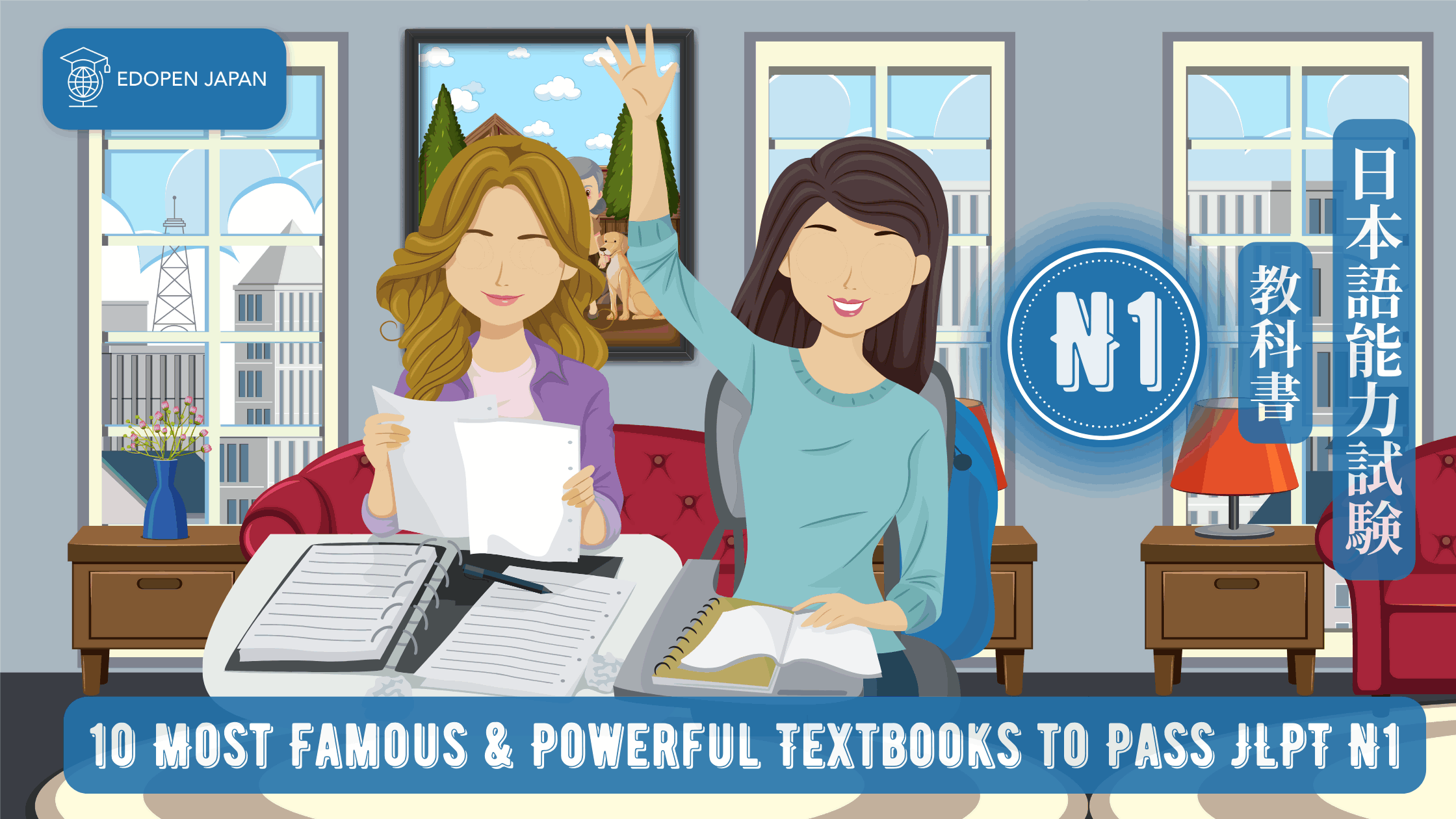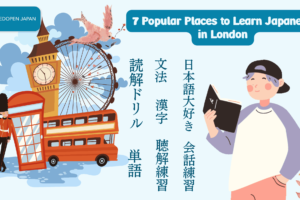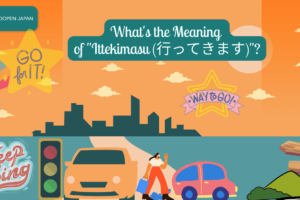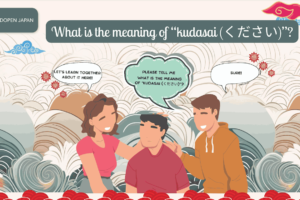The JLPT certificate (Japanese Language Proficiency Test or 日本語能力試験) is a compulsory certificate that non-native Japanese must have if they wish to obtain a scholarship for higher education or a career in Japan. Although in some circumstances an English language certificate is sufficient. However, for higher salaries and career advancement opportunities, the JLPT certificate is the key.
The JLPT exam has 5 levels of N5, N4, N3, N2 and N1. Level N5 is the lowest and easiest level of the JLPT, while Level N1 is the highest and most difficult level of the JLPT. In addition, for example you will automatically have a better chance of earning a high salary and progressing quickly in your career if you have a JLPT N1 certificate.
In order to be able to pass the JLPT N1 test, choosing the right learning resources is very crucial and so important for you to do. Using the right book can be the beginning of your success in passing JLPT N1. Therefore, to help you, in this article we will thoroughly explain 10 most famous & powerful textbooks to pass JLPT N1.
We hope you’ll continue to follow other articles to broaden your horizons and understanding of the JLPT. After reading this article, I’d love to hear your suggestions and impressions in the comments section below. Don’t forget to leave a comment! Okay, let’s get started!
Read also:
JLPT N1 Vocabulary (Part 1) | The Most Complete Lists
JLPT N1 Vocabulary (Part 2) | The Most Complete Lists
JLPT N1 Vocabulary (Part 3) | The Most Complete Lists
Contents
About JLPT N1
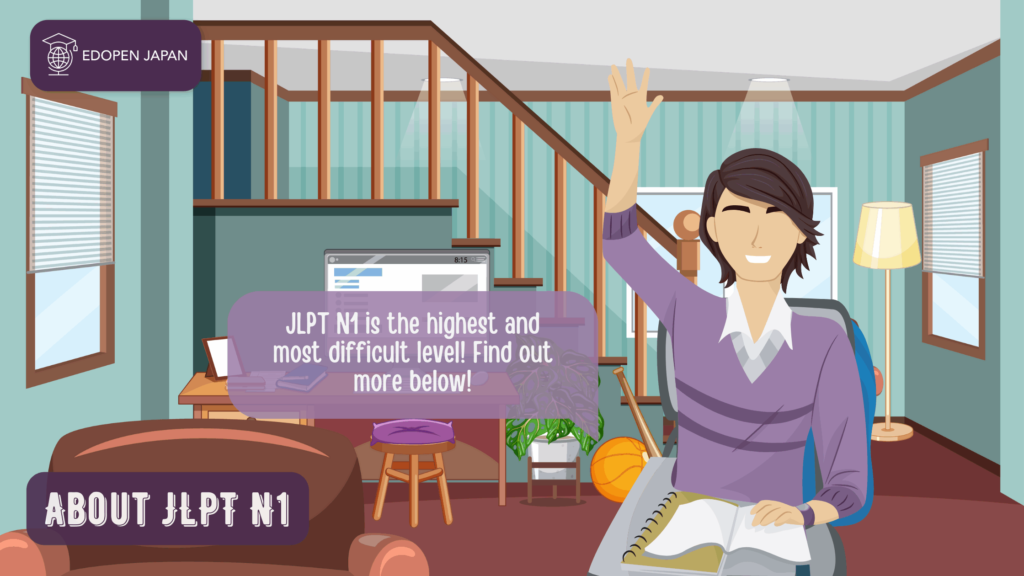
JLPT N1 is the highest and most difficult of the 5 levels of the Japanese Language Proficiency Test (JLPT). In fact, it is rumoured that many foreigners rarely take the JLPT N1. It is said that even native Japanese speakers struggle to answer the questions at the N1 level.
Is this true? Of course, the above question will be debunked if you practice diligently and find the right book to conquer the JLPT N1. Many students have been able to pass the JLPT N1 in their second or third year in Japan. Like the other JLPT levels, the JLPT N1 also tests the student’s understanding in several different areas, as follows:
| 1. Grammar (文法/bunpou), vocabulary (語彙/goi) and kanji (漢字/kanji) |
| 2. Reading Comprehension (読解力/dokkai ryoku) |
| 3. Listening Comprehension (聴解力/Chōkai ryoku) |
The JLPT N1 exam then consists of 2 sections as follows Language Knowledge & Reading (110 minutes) and Listening (60 minutes). Again, the reading and listening section is very long, almost 3.5 hours! So, in addition to your skills, you also need to prepare yourself physically and mentally!
1. Language Knowledge & Reading – 110 minutes
As with the other levels, the JLPT N1 exam has specific criteria that are tested in each component of the session.
Therefore, we can use this information to select the books that are most suitable to reinforce the learning units that we are still lacking and that can support our learning process to pass the JLPT N1. For the details, please check the table below:
| (Vocabulary) | |
| 1. Kanji reading | Test reading of the words written in kanji. |
| 2. Contextually-defined expressions | Test words whose meaning is apparent from the context. |
| 3. Paraphrases | Test words and phrases with similar meanings. |
| 4. Usage | Test the use of words in sentences. |
| (Grammar) | |
| 5. Sentential grammar 1 (selecting grammar form) | Testing judgment of grammatical formats that fit sentences. |
| 6. Sentential grammar 2 (sentence composition) | Testing syntactically correct and meaningful sentence composition. |
| 7. Text grammar | Examining judgment about the appropriateness of sentences to the flow of the text. |
| (Reading) | |
| 8. Comprehension (short passages) | Test content comprehension by reading texts of approximately 200 characters, such as descriptions and instructions on various topics, including everyday life and work. |
| 9. Comprehension (mid-size passages) | Test understanding of causal relationships or reasoning by reading text of approximately 500 characters, e.g., reviews, commentaries, and essays. |
| 10. Comprehension (long passages) | Test understanding of an outline or the author’s ideas by reading a text of about 1,000 characters, such as a commentary, essay, or novel. |
| 11. Integrated comprehension | Test understanding through comparison and integration by reading several texts (totaling about 600 characters). |
| 12. Thematic comprehension (long passages) | Test understanding of intended points and ideas by reading an abstract and logical text of approximately 1,000 characters, e.g., editorials and reviews. |
| 13. Information retrieval | Test ability to extract necessary information from materials such as advertisements, brochures, magazines, and business documents (approximately 700 characters). |
2. Listening – 60 minutes
What are the specific components tested in listening comprehension? Please read the following:
| (Listening Comprehension) | |
| 1. Task-based comprehension | Test understanding of content by listening to a connected text (test ability to extract necessary information to solve specific problems and understand appropriate actions). |
| 2. Comprehension of key points | Test content understanding by listening to a connected text (test ability to narrow down points based on necessary information presented in advance). |
| 3. Comprehension of general outline | Test content understanding by listening to a connected text (test understanding of the speaker’s intent and the ideas of the overall text). |
| 4. Quick response | Test ability to select appropriate responses by listening to short utterances such as questions. |
| 5. Integrated comprehension | Test understanding of content by comparing and integrating multiple sources of information by listening to a relatively long text. |
Knowing these points will hopefully help you to be better prepared and understand what exactly the main purpose of your pursuit of the JLPT N1 is. It’s not just about getting the certificate, it’s about understanding and deepening your knowledge of the Japanese language. So even after passing the JLPT N1, you will still want to learn more Japanese.
Practice JLPT N1 Exam with Complete Set of Textbooks
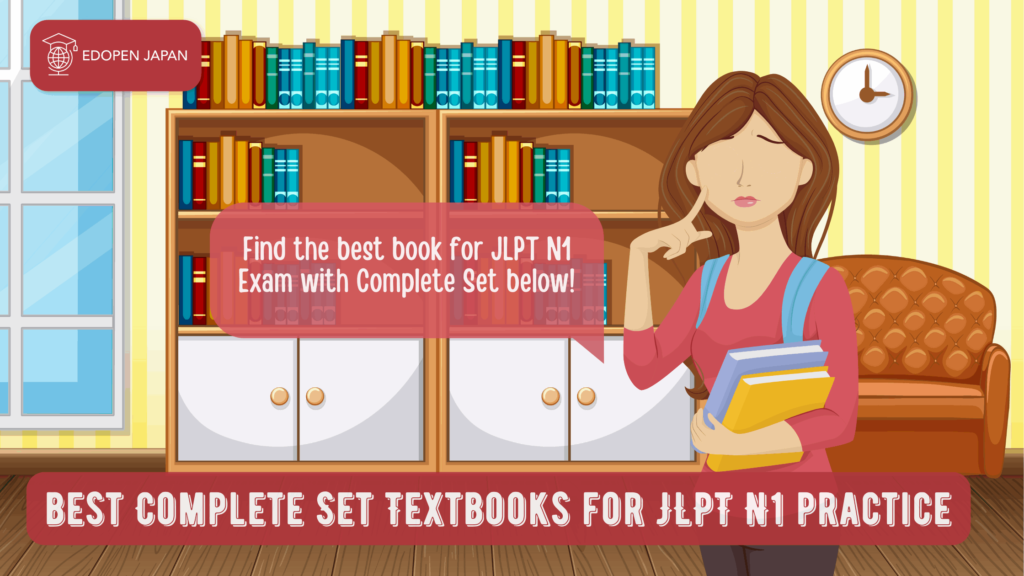
To pass the JLPT N1, you must first master all the components tested in the JLPT N1 such as grammar, vocabulary, kanji and more. The more you practice and the more detailed material you master, the better your chances of passing the JLPT N1.
Fortunately, there is now a diverse range of textbooks available that offer a comprehensive set of materials. They satisfy all your requirements to successfully pass the JLPT N1 examination.
Next, you simply need to verify that the required content corresponds to the topics covered in each comprehensive set of textbooks, and naturally, align it with your budget. Please take a look at the top 5 textbook sets we have curated for you below.
1. Thorough Training JLPT N1
This book titled Thorough Training JLPT N1 is one of the books that cover the JLPT N1 material very comprehensively and with hundreds of very rich sample questions. With this book, you will discover the most recent techniques to succeed in the updated JLPT N1. In one comprehensive set, you will receive four books containing comprehensive materials as outlined below:
| 1. JLPT N1 Thorough Training – Grammar | This grammar book is compiled in 7 chapters, with the first 5 chapters covering at least 220 grammar points with clear example sentences and 627 practice questions that are most common on the JLPT N1 exam. |
| 2. JLPT N1 Thorough Training – Kanji & Vocabulary | The book includes about 18,000 vocabulary words and at least 1,200 practice questions that have frequently appeared in the JLPT N1 over the past 20 years. |
| 3. JLPT N1 Thorough Training – Reading | The grammar book covers reading comprehension, sample passages of various text lengths, and simulated tests similar to the actual JLPT N1 exam. |
| 4. JLPT N1 Thorough Training – Listening | Explains strategies for improving scores, complete practice test simulations with CDs, answer sheets, answers, and complete scripts of practice test sections in a special booklet. |
2. Nihongo So-Matome JLPT N1
Nihongo So-Matome is an acclaimed textbook series due to its distinctive concept of being designed for learners to complete in just 8 weeks. The books feature charming illustrations and progress tables that are highly encouraging for users. It is highly recommended for promoting independent learning! You will receive a set of 5 books altogether, as detailed below:
| 1. Nihongo So-Matome JLPT N1 – Kanji | There are 1,550 Kanji characters. Plus rich explanations and sample practice problems with accurate translations in English, Chinese and Korean. |
| 2. Nihongo So-Matome JLPT N1 – Vocabulary | Discusses more than 2000 Japanese vocabulary and has a high chance of appearing in JLPT N1. Plus practice questions that are accurate and in accordance with the JLPT N1 format. |
| 3. Nihongo So-Matome JLPT N1 – Grammar | Covers at least 224 grammar points with very comprehensive structures, explanations and example sentences and usage. |
| 4. Nihongo So-Matome JLPT N1 – Reading Comprehension | Discusses all the basic techniques in mastering reading skills and how to process information for short to long texts with practice questions according to JLPT N1 format. |
| 5. Nihongo So-Matome JLPT N1 – Listening Comprehension | Discusses questioning patterns, sharpening listening comprehension and processing information with both conversation and long sections. |
3. New Kanzen Master JLPT N1
One of the books that consistently tops the list of high-demand resources for JLPT N1 test-takers is the New Kanzen Master JLPT N1 complete set. The book’s strength lies in its detailed discussions and wide range of example questions, which effectively assess the users’ comprehension.
Then, the material has been meticulously chosen from past exams and sources to focus on words and questions likely to feature in the test. So, by thoroughly understanding the pattern of JLPT N1 questions, you will have the confidence and preparedness to excel in the JLPT N1 exam. Each set comprises five books, which are outlined below:
| 1. New Kanzen Master JLPT N1 – Grammar | Compiled with an introduction to the material, questions and answering strategies and mock tests to identify your readiness for JLPT N1. |
| 2. New Kanzen Master JLPT N1 – Kanji | There are 677 kanji covered in 31 chapters, plus 5 kanji mock tests including 15 extra questions. |
| 3. New Kanzen Master JLPT N1 – Vocabulary | Discusses basic and practical practice questions in the exact format of the JLPT N1 exam. There are 945 sample questions in this workbook. |
| 4. New Kanzen Master JLPT N1 – Reading Comprehension | There are 28 sample questions with 68 practice exercises and mock tests arranged in a very varied manner from advertisements, pamphlets, publications and more. |
| 5. New Kanzen Master JLPT N1 – Listening Comprehension with CD | Features an introduction to the test format, questions and mock tests that really focus on strengthening your preparation for the listening skills section. |
4. Speed Master JLPT N1
One of the most widely used study materials for the JLPT N1 exam is the Speed Master complete set books. This series is often highly recommended due to its three distinctive learning approaches: “warm-up”, “practice”, and “mock tests”. You will learn the material in a methodical and hassle-free way. A complete set of 5 books will be provided to you containing the following:
| 1. Speed Master – Quick Mastery of JLPT N1 Grammar | Discussed JLPT N1 grammar, how to process information in text, practice questions similar to the actual exam. |
| 2. Speed Master – Quick Mastery of JLPT N1 Kanji | The 10 units contain 400 kanji and 900 idioms with accurate explanations and translations with practice questions in JLPT N1 format. |
| 3. Speed Master – Quick Mastery of JLPT N1 Vocabulary | Have a variety of reading texts that cover all the vocabulary that is likely to appear in the JLPT N1 exam. |
| 4. Speed Master – Quick Mastery of JLPT N1 Reading | Practice basic mastery skills and how to accurately extract information from short and long texts containing N1-level grammar, kanji and vocabulary. |
| 5. Speed Master – Quick Mastery of JLPT N1 Listening | It consists of a variety of texts similar to the real JLPT N1 exam plus strategies and concepts on how to understand the information and answer the questions. |
5. Nihongo Power Drill JLPT N1
If you require a workbook that serves as a question bank to aid you in conquering JLPT N1 questions, the Nihongo Power Drill N1 book is a fitting addition to your collection. It will increase your familiarity with JLPT N1 questions. In one set of Nihongo Power Drill JLPT N1, you will receive two books according to the following specifications:
| 1. Nihongo Power Drill JLPT N1 – Kanji & Vocabulary | This workbook is specially designed for users to master 660 questions in the same format as the JLPT N1 vocabulary session. |
| 2. Nihongo Power Drill JLPT N1 – Grammar | This textbook comprises 30 lessons with a total of 580 exercises. Out of these, 480 adhere strictly to the JLPT N1 format, while the remaining 100 questions are geared towards enhancing your ability to answer questions quickly. |
Extra Textbooks for Grammar, Kanji & Vocabulary Drill
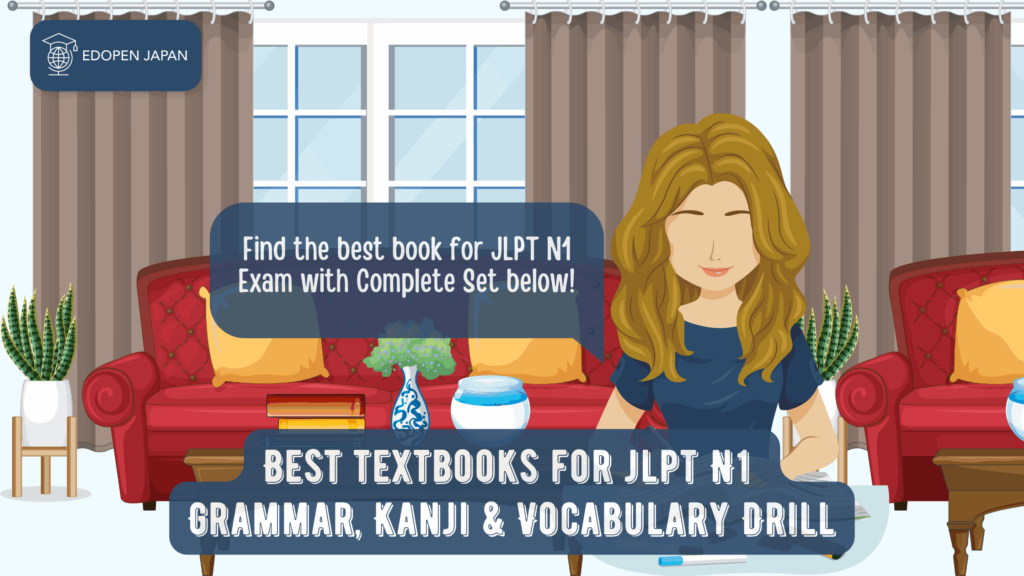
To successfully pass the JLPT N1 grammar exam, it is necessary to thoroughly comprehend approximately 400 grammar points, 2,000 kanji characters, and 10,000 Japanese vocabulary words. Diligent studying is imperative to reaching this level of proficiency.
However, it is important to acknowledge that mastery cannot be achieved quickly and without consistency. All the above components are often expressed in lengthy texts or passages. This test challenges your grammar, kanji, and vocabulary processing skills in a limited time frame.
Therefore, apart from the books already discussed, we also want to recommend reference textbooks and dictionaries to assist you in reaching your objectives with certainty.
1. A Handbook of Japanese Grammar Patterns for Learners and Teachers
A Handbook of Japanese Grammar Patterns for Learners and Teachers is the current top seller due to its vast selection of 3,000 grammar items. All of these items align with the grammar patterns necessary for JLPT N1 and N2 exams.
You will receive comprehensive examples of grammatical usage. Aside from test preparation, you can also utilize this handbook to peruse newspapers and publications, compose business correspondence, conduct research, and much more in the Japanese language. Highly recommended if you wish to achieve advanced proficiency in Japanese.
2. Kanji Dictionary for Foreigners Learning Japanese 2500
Mastering Japanese depends on a thorough understanding of kanji. We highly recommend using the Kanji Dictionary for Foreigners Learning Japanese 2500, which contains over 2,100 essential and officially taught kanji in Japanese public schools.
On every page, you will receive in-depth details about the kanji, including reading instructions, stroke order, vocabulary employing the kanji, and real-life examples. It’s uncommon and challenging to locate a comprehensive kanji dictionary such as this one! Hence, we strongly advise you to acquire this dictionary!
3. 3000 Essential Vocabulary for the JLPT N1
To successfully pass JLPT N1 and the previous four levels, around 10,000 Japanese vocabulary words must be mastered. Therefore, having a broader and more diverse vocabulary will significantly increase your chances of passing JLPT N1.
This vocabulary is crucial to achieving high scores in the reading and listening assessments. Therefore, this self-paced resource for learning Japanese vocabulary titled ‘3000 Essential Vocabulary for the JLPT N1’ is precisely what you require.
In addition to the vocabulary, you will receive complete English and Chinese translations, examples of sentences, and a red sheet that you may practice with to test your knowledge of missing terms.
Extra Textbooks for Listening Comprehension & Mock Test Drill
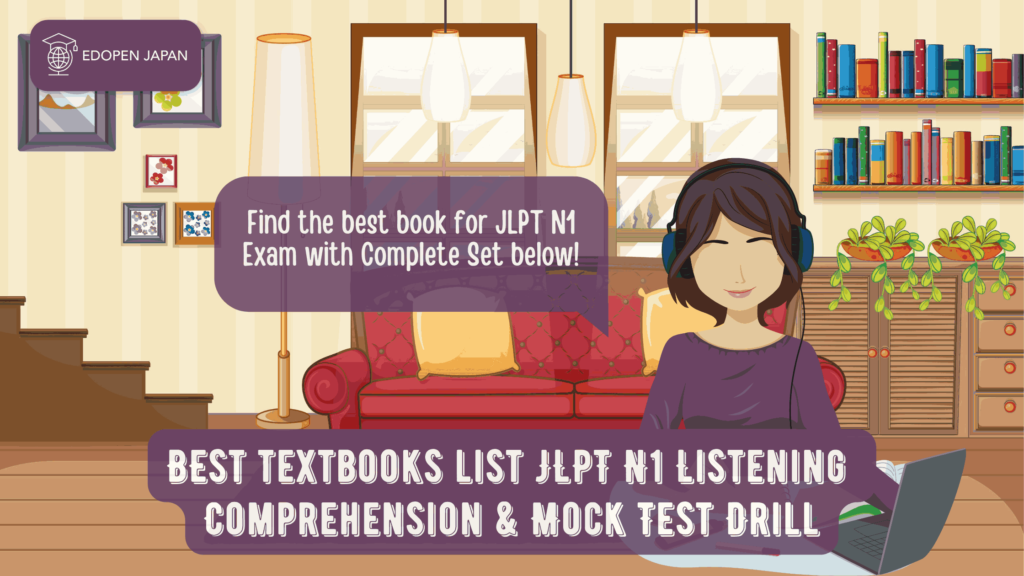
To succeed in JLPT N1, it is essential to adequately train your listening skills. And the essential component is consistent practice! The more acquainted you become with the practice questions, the higher the probability of success in surpassing the JLPT N1.
In fact, the better your chances of obtaining a great score! So, please check out the following two lists and select the one that suits your needs.
1. Level Up Training N1 Listening
In addition to possessing reading competency, mastery of vocabulary and kanji, one must also be familiar with Japanese pronunciation and intonation. The pace of pronouncing texts, dialogues or conversations in the JLPT N1 listening proficiency exam is typically regular and may even be quicker. Hence, acclimating oneself to this speed is the crucial factor for triumph.
We strongly recommend the Level Up Training N1 Listening book as it comprises numerous questions that concentrate on readiness for the listening proficiency exam session. Please put this book on your list so that you can master JLPT N1 effectively. Best of luck!
2. JLPT N1 Official Practice Workbook
Especially regarding the final point, we suggest the official book published by the JLPT test provider to hone your skills. This book offers the opportunity to practice questions akin to the real JLPT N1 exam. Broadly speaking, this book is divided into 3, as follows:
| 1. The first part contains sample questions like the real JLPT N1 exam in all sessions. |
| 2. The second part contains answer keys and scripts for the listening skills session. |
| 3. The third section contains the structure and information specific to the latest JLPT N1 exam. |
You will receive a CD, and this book is an option to enhance your preparation for successfully passing JLPT N1. We hope that you achieve a perfect score.
Conclusion
Finally, please review the 10 Most Popular Textbooks to Help You Pass JLPT N1 above as follows!
| Practice JLPT N1 Exam with Complete Set of Textbooks | 1. Thorough Training JLPT N1 2. Nihongo So-Matome JLPT N1 3. New Kanzen Master JLPT N1 4. Speed Master JLPT N1 5. Nihongo Power Drill JLPT N1 |
| Extra Textbooks for Grammar, Kanji & Vocabulary Drill | 1. A Handbook of Japanese Grammar Patterns for Learners and Teachers 2. Kanji Dictionary for Foreigners Learning Japanese 2500 3. 3000 Essential Vocabulary for the JLPT N1 |
| Extra Textbooks for Listening Comprehension & Mock Test Drill | 1. Level Up Training N1 Listening 2. JLPT N1 Official Practice Workbook |
We also welcome any feedback and recommendations for our improvement. We wish you success in your JLPT N1 exam!

